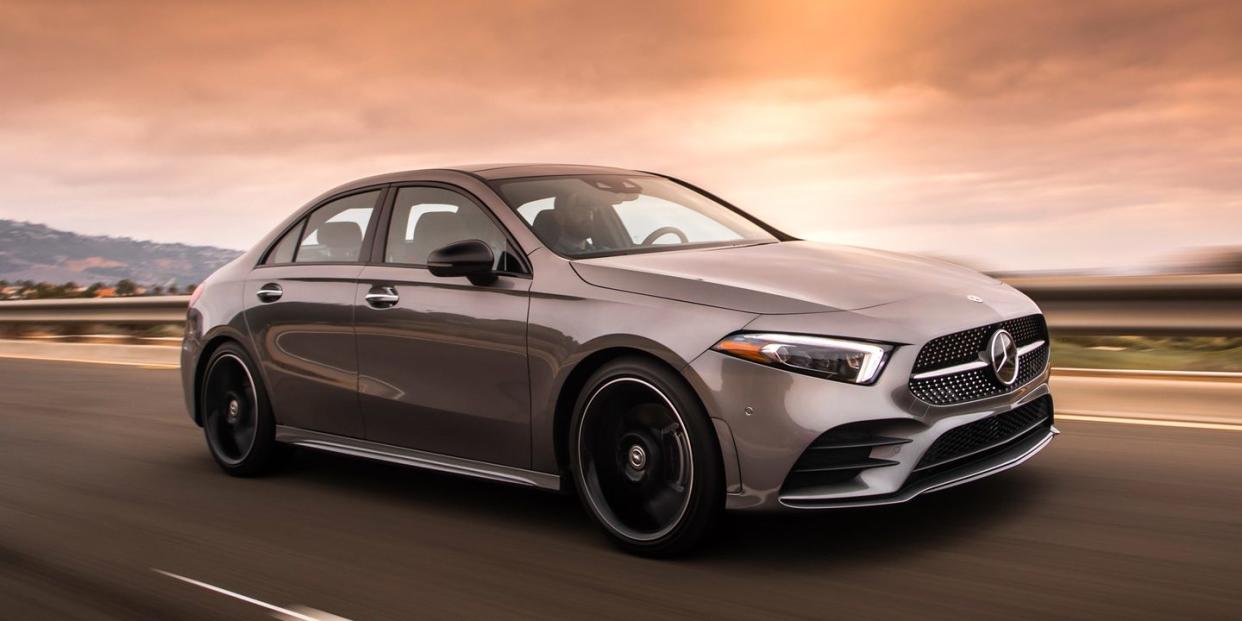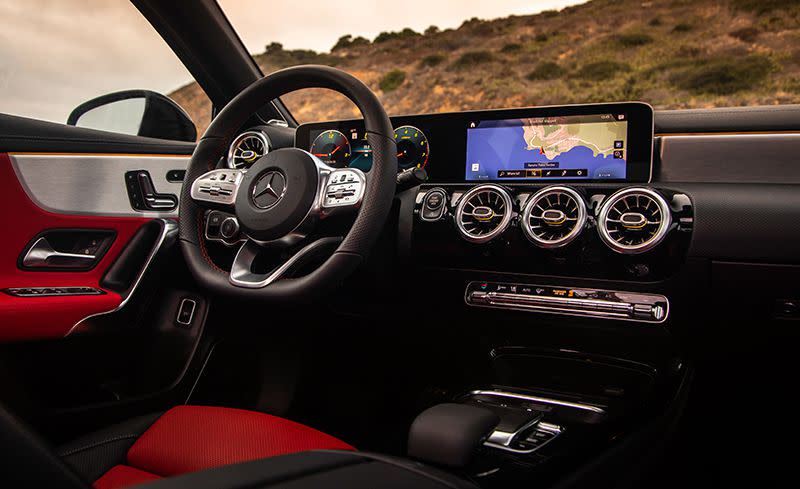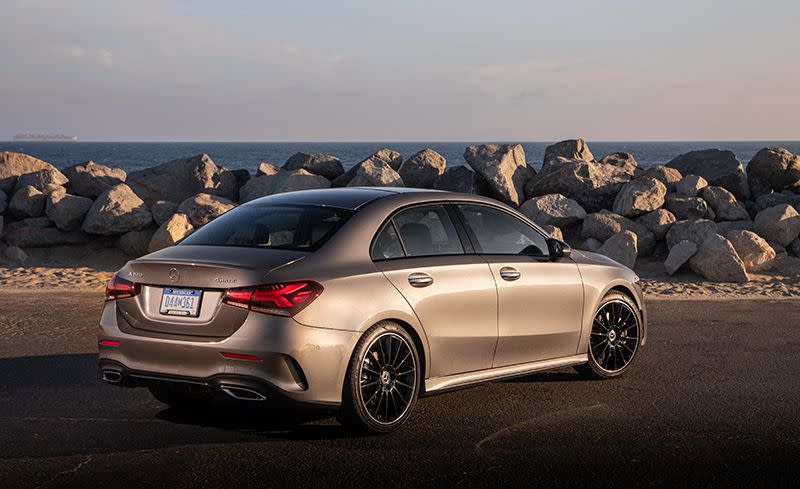The 2019 Mercedes-Benz A220 4Matic Is a Proper Mercedes

The quintessential Mercedes is still a technology-laden luxury sedan. Yes, today the company's three-pointed star adorns a wider variety of vehicles than even Ford's Blue Oval. But that is merely the cost of chasing luxury market share. Mercedes' commitment to its ideal form is so strong that it graces even its most entry-level car, the A-class subcompact, which has grown and grown up. Now offered as a proper three-box design-two more than it started with in 1997-the fourth-generation A-class makes its debut in the U.S. market early next year.
Under its steel skin, the A-class rides on an evolution of the transverse-engine platform underpinning the current CLA. At just more than 179 inches long, the A-class is some three inches shorter than that "four-door coupe," as Mercedes insists on describing it, and yet the packaging is far superior. Headroom and legroom are substantially greater in both rows, and the rear seat is not only usable but actually comfortable for two adults. Design tricks such as a dashboard raked steeply toward the firewall make the A-class almost TARDIS-like in its roominess.
Mercedes will launch the A here with just one powertrain: a turbocharged 2.0-liter inline-four making 188 horsepower and 221 pound-feet of torque, mated to a seven-speed dual-clutch automatic. All-wheel drive is optional. This A220 is essentially a detuned version of the European A250, which has 221 horses and 258 pound-feet. While the more potent model might eventually come stateside, the A220 feels stronger than its numbers suggest. The 4MATIC version hits 60 mph in 6.1 seconds, matching the last CLA25o we tested despite being down 20 ponies and 37 pound-feet. Throttle response in the A-class is excellent and turbo lag is nearly nonexistent. The dual-clutch automatic offers paddle shifters, yet left to its own devices, it does a fine job of keeping the engine in the ample part of its torque band. None of the low-speed clunkiness we've experienced in the CLA is present.
Mercedes has also banished that car's harsh ride. While some European A-classes have lower-cost twist-beam rear suspensions, all U.S.-market cars have a multilink rear suspension and struts up front, and wheels range in size from 17 to 19 inches. We've driven both a front-driver and an all-wheel-drive version like our test car. Both wore 19-inch wheels and delivered a comfortable and well-controlled ride, although the front-drive model was better damped, with a bit less impact harshness than the heavier 4MATIC model. The steering has a natural heft that translates into precise car placement. Pirelli P Zero PZ4 tires deliver plenty of grip but also contribute to a sometimes noisy cabin; all-season tires will most assuredly be fitted as standard equipment when the A-class goes on sale here in the next few months.
Dynamically, the baby Benz resembles top-tier sport compacts such as the Honda Civic and the Volkswagen Golf, yet inside, the A-class tries hard to distinguish itself from such pedestrian transportation. Most noticeable are the side-by-side screens, freestanding and vertically positioned atop the dashboard. Although all those pixels do a good job of distracting occupants from the surrounding plastic (if not the road), they carry an ergonomic liability. The instrument-cluster screen can be difficult to view through the steering wheel, and the touchscreen for the new infotainment system is just out of reach for drivers with short arms.
If this is a case of form over function, the same cannot be said of the seats, which are excellent, both supportive and comfortable. Extensive contrasting trim throughout the interior, ambient lighting that extends across the dash and into the doors, and ornate illuminated vents are all on offer and give the A-class more than enough jewelry to be taken seriously as a luxury car.
On the outside, however, the baby Benz lacks grace. It mimics the look of a Mercedes rather well, especially in the front, but its small size coupled with the necessity of having a functional rear seat compromises the aesthetic that makes the CLA so distinctive. Mercedes claims that the A-class sedan has an industry-leading drag coefficient of just 0.22, but the narrow and steeply raked windshield that makes this possible gives the car a high cowl that's quite noticeable from behind the wheel and demands a more elevated seating position than some drivers might prefer.
Mercedes says the A-class will be available for under $35,000, but we doubt any dealer will be stocking one that doesn't have the $2100 Premium package, essential for upgrading the twin 7.0-inch screens to 10.3-inch panels. This would put the out-the-door price of the A220 close to $37,000. Our test vehicle came with the $2000 all-wheel-drive system plus what we estimate to be some $13,000 in options, including $2250 for Mercedes-Benz's suite of driver-assistance tech. With so many features available, it will be entirely possible to spend upward of $50,000 on an A-class.
Of course, that's the trap that entry-luxury cars represent. Get too crazy with the A-class configurator and you might wonder whether you would be better off shopping for a lightly optioned C-class. Or maybe not. At its core, the A-class is a good-driving, right-size sports sedan with some promising technology, a car that offers more than just inexpensive entrée to the brand.
('You Might Also Like',)



